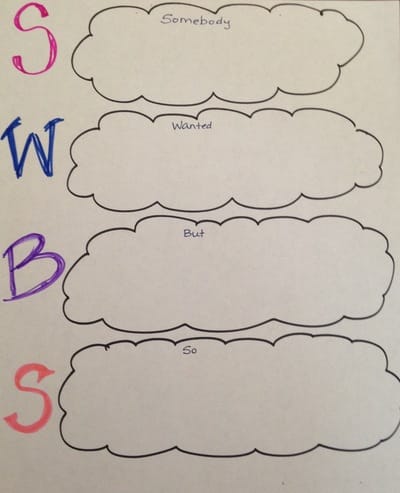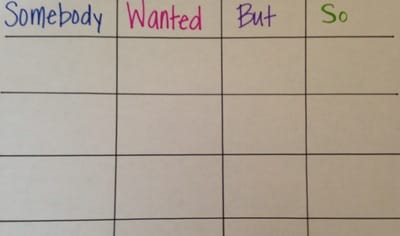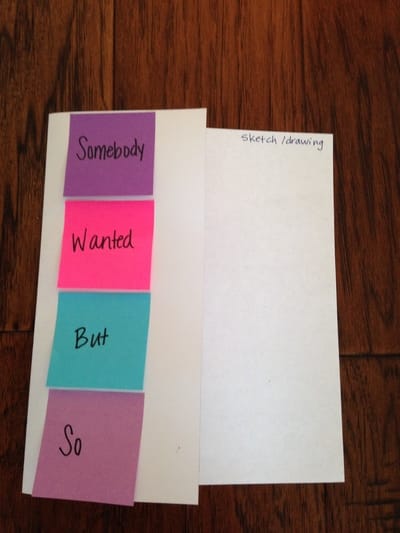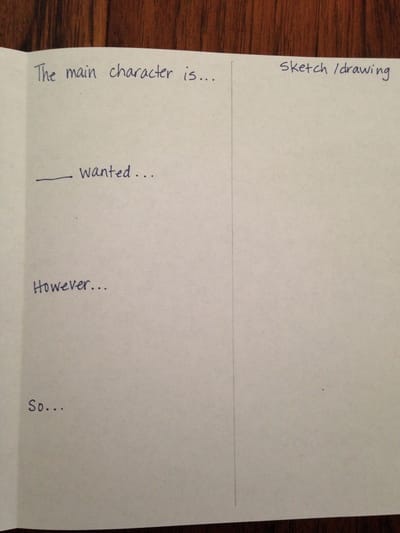|
Summarizing to the Next Level...Somebody Wanted But So I'm going to venture to say that as educators most of us have either used SWBS or seen it used with students. In this post, I hope to show you how it can be leveled up a few notches. And rather than spread thin, we can help our kids dig deep into summarizing using this strategy which can be pretty powerful if used with fidelity. Here's what I USED TO do with my students:  I might read a book to the class (like a read aloud). Let's use a book most of us know for the example, Cinderella. So I would show the students the graphic organizer/chart (see typical examples of organizers/charts below). And I would model how to find the Somebody: Cinderella What she wanted: to go the the ball But: she had a lot of chores and no gown So: a Fairy Godmother magically gives her a gown and she goes to the ball I have even seen teachers share with students how to add a Then and Finally in an effort to extend the summary. Here's where I started to shift my thinking about SWBS. I know that summarizing is a critical skill for my students. It involves deep thinking and I need them to know how to summarize. But I wanted them to go deeper into the summary. This felt so surface level. One day I saw Meredith Alvaro, National Literacy Consultant and expert in ELLs and Special Education students, share how she teaches SWBS and it changed everything for me. Instead of one word or even phrases for each piece of the puzzle, the SWBS became a paragraph! Here's how: Somebody: Cinderella was a young, beautiful girl who lived with her Stepmother and Stepsisters. Wanted: When and invitation to the Ball arrived, she wanted very badly to go with her Stepfamily. But: However, she had so much housework to do and she didn't own an evening gown. So: Magically, a Fairy Godmother appeared and granted her wishes to go to the ball in a beautiful gown. Then put them all together in paragraph form starting with an indent like so: Cinderella was a young, beautiful girl who lived with her Stepmother and Stepsisters. When and invitation to the Ball arrived, she wanted very badly to go with her Stepfamily. However, she had so much housework to do and she didn't own an evening gown. Magically, a Fairy Godmother appeared and granted her wishes to go to the ball in a beautiful gown. I have tried out this type of SWBS in several classrooms and found a few tips. One. Use different colors for each sentences when modeling. The color chunking helps students differentiate between parts. Two. Don't wait until the end of the story or book to begin summarizing. Teach students to summarize while they read. This is what readers should do. We don't want to wait until the end of the book to realize that we didn't understand what we were reading! Three. Use pictures to model SWBS especially with Newcomer/Beginner English Learners. All kids can benefit from using pictures to learn how to effectively summarize but beginner English Learners need the comprehensible input that visuals offer. I will demonstrate this below. Four. Use nonfiction! Social studies offers an excellent venue for SWBS. SWBS is not just for fiction. Basically anything that has a story line can be summarized. Teach students to use SWBS. Using Pictures with SWBS I would begin by discussing the picture and labeling it in a Picture Talk. What do we see? Label all nouns in one color. What actions are taking place? Label all verbs in a different color. Somebody: The colonists were brave men willing to fight for their new country. Wanted: They didn't want to pay taxes on tea and other goods from England. But: However the British were taxing them on goods. So: The colonists revolted in anger and threw all the tea off the boat in an act called the Boston Tea Party. Using Nonfiction with SWBS Obviously, the picture of the Boston Tea Party is nonfiction. So it combines both pictures and nonfiction. But for Advanced and Advanced High students, pictures are not always needed. You might have a text only nonfiction piece that you would like for them to summarize. A good example might be a text on a famous figure in history, such as Cesar Chavez. Cesar Chavez was a farm worker and civil rights activist. He wanted better wages and work conditions for farm workers. However not everyone agreed with Cesar's point of view. So he organized strikes, boycotts and marches to bring attention to his cause. Finally, his dedication paid off and the first Bill of Rights for agricultural workers was enacted. Your nonfiction text does not have to be regarding a person, it could be a country and what they wanted. It could be a group of people. It could be an animal. I have even done SWBS with pictures of living and nonliving things. After putting the students in cooperative groups and giving them sets of pictures (living and nonliving things), they pick one each and must orally tell one another in SWBS form why the thing is living or nonliving. Example: The bird is a living thing. It needs food, water, and air to survive. Without the basic needs of food water, and air, the bird would die. So the bird must eat worms and find water and breathe air. It is a living thing. As with any strategy, tons of modeling and gradual release of responsibility is key to success. When I model and guide students using I do, we do, you do their success rate is much greater. What I love about SWBS is that it's not just for one grade level and it's not just for one content area. It's for life. Resources: Meredith Alvaro 7 Steps to a Language Rich Interactive Classroom, J. Seidlitz When Kids Can't Read What Teachers Can Do, K. Beers
Hey, Valentina. I LOVE SWBS and am a Kylene Beers groupie! My ELs find it SWBS really helpful as well. It's just an easy recap strategy. I created an infographic and wrote a similar post on SWBS for ELs here http://www.empoweringells.com/2016/09/10/a4-teaching-ells-to-summarize-plot/.
Valentina
1/4/2017 03:25:55 pm
Thank you, Tan. Your comments mean a great deal to me. I've been using SWBS for years too. But after seeing how Meredith Alvaro implements the strategy with pictures as well as with nonfiction, I really had a mind shift. The twist you have put on using SWBS is excellent! This is a very clear way to create a summary. Also the color coding helps differentiate the various aspects of the text. The added detail in each section takes students writing from basic to more proficient. Thank you.
Mrs. W
10/30/2017 12:09:58 pm
Thank you Valentina. I really love your blog and am learning so much. I am new to Elementary ELL so it helps a lot to read through your ideas and thoughts. Comments are closed.
|
Categories
All
|





 RSS Feed
RSS Feed
